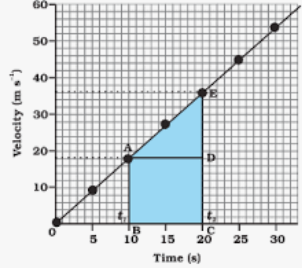- Home/
- SSC & Railways/
- Article
The area under a velocity-time graph gives _______? (A) Displacement (B) Change in Velocity (C) Acceleration (D) Speed
By BYJU'S Exam Prep
Updated on: September 25th, 2023
The area under a velocity-time graph gives the displacement. Let’s assume displacement is denoted as X. Displacement refers to a shift in an object’s position. In simple words, the smallest spacing between two defined points is represented by the one-dimensional variable known as displacement. SI unit of Displacement is “m.”
Table of content
Displacement is The Area in Velocity Time Graph
The formula to calculate displacement is Δx = xf – xo
Where xf is the final position and xo is the initial position, Δx is the displacement.
For this calculation, it is important that you understand the concept of Velocity (V). Below, we have mentioned some points for your help.
- Velocity is the measure of how quickly a displacement changes. A vector quantity that is.
- The CGS unit of velocity is cm/s, whereas the SI unit is termed m/s.
- The velocity is determined by the displacement-time graph’s slope.
Initial velocity is how fast an object travels if gravity applies force on the object. Similarly, the final velocity measures the direction and speed of a moving body once it has reached the maximum acceleration.
Instantaneous velocity V = dx/dt
V = dx/dt
Hence dx = V dt
Displacement (X) = ∫x1x2 dx = ∫t1t2 V dt

Therefore, the displacement is indicated by the area under the velocity-time graph. Similar to this, the area under-speed time graph displays the overall mileage.
Summary:
The area under a velocity-time graph gives ___? (A) Displacement (B) Change in Velocity (C) Acceleration (D) Speed
A velocity-time graph’s undercut region indicates displacement. The meter is the standard displacement unit in the International System of Units (SI) (m). Displacement is one of the essential topics of Physics.

